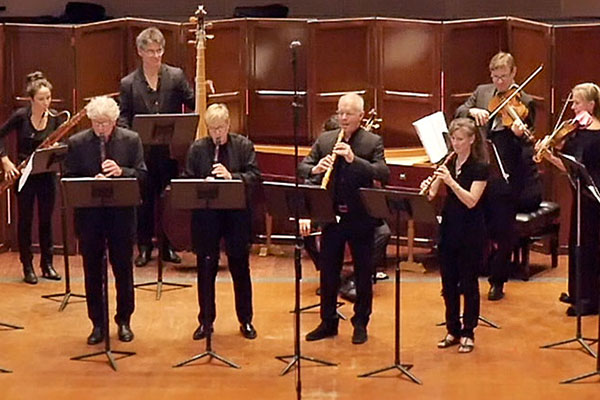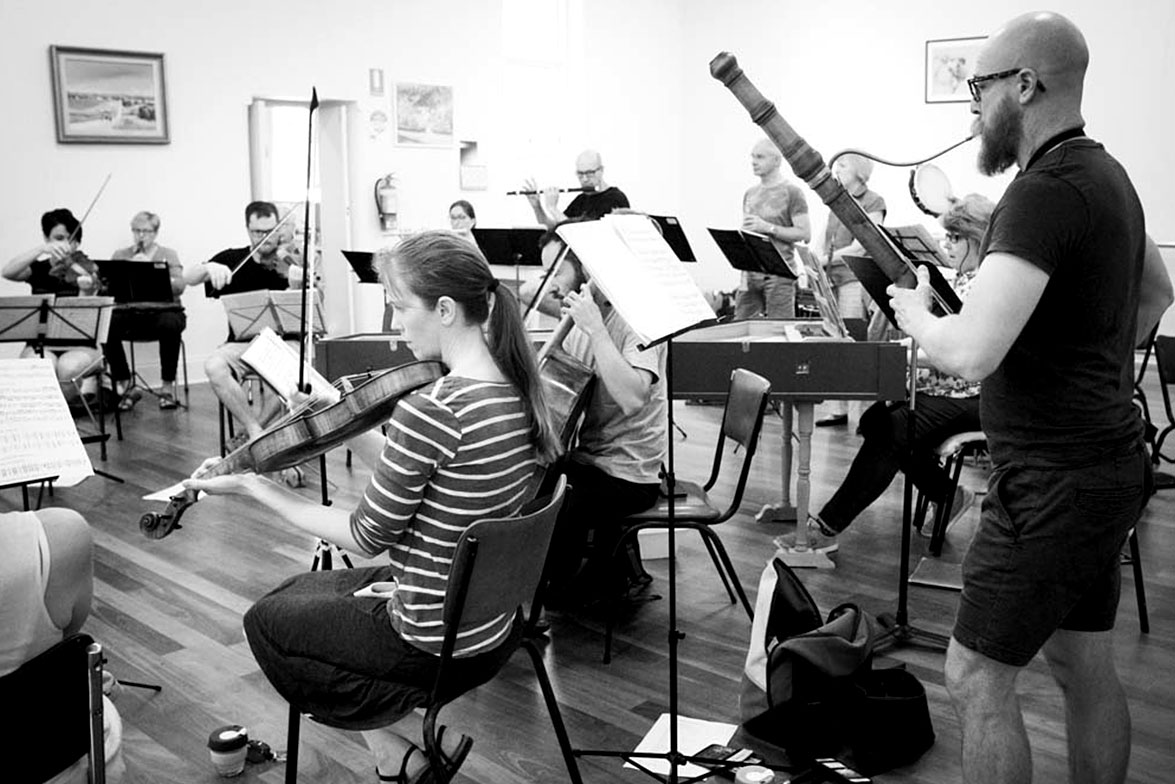An innovative and very popular recent development by Adelaide Baroque has been the formation of its orchestra to perform larger works of the huge baroque repertoire for Adelaide and SA audiences.
For the last three years the Adelaide Baroque Orchestra has performed numerous concerts in beautiful Adelaide venues such as Elder Hall, Ukaria, The Festival Centre, St Peter’s Cathedral and continued the ever popular “Café Zimmermann” at Burnside Town Hall (recollecting the style of the famous coffee house in Leipzig where Bach and Telemann played).
These concerts with vocalists such as Max Reibl and Bethany Hill have received critical acclaim and often drawn capacity audiences. Calling on a core group of strings and continuo and enhanced by wind and brass instruments and percussion, the orchestra performs works of Bach, Händel Vivaldi, Telemann and Purcell (amongst others), the very subtle and refined French repertoire (such as Lully and Charpentier) as well as less well known masters.
This is truly an enriching addition to Adelaide’s musical culture!


